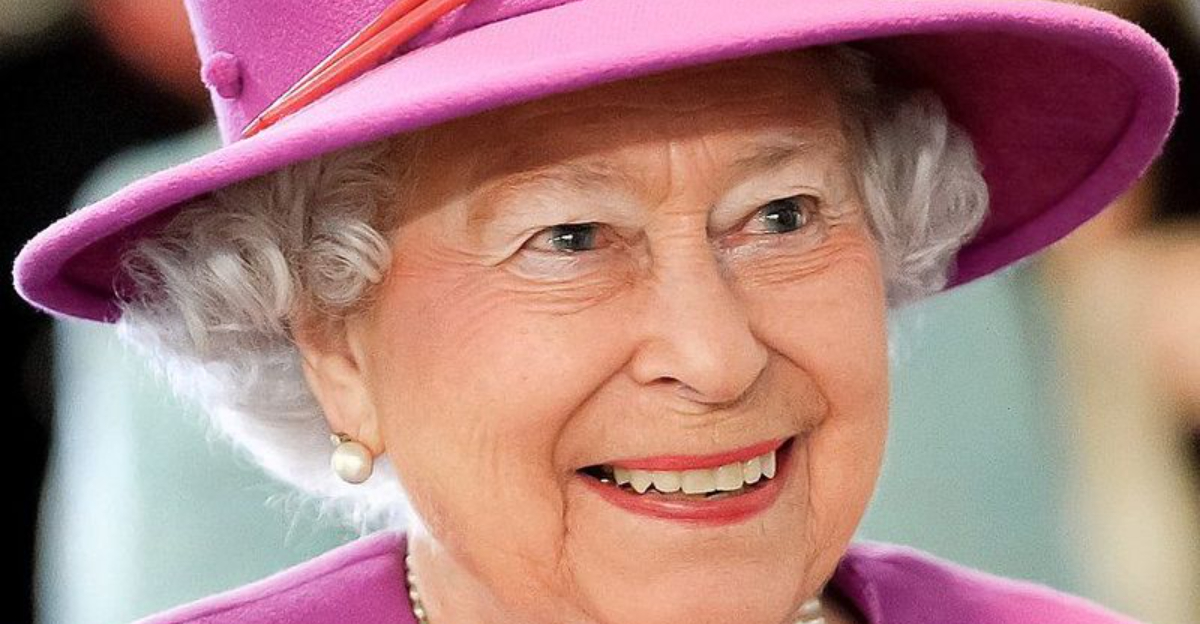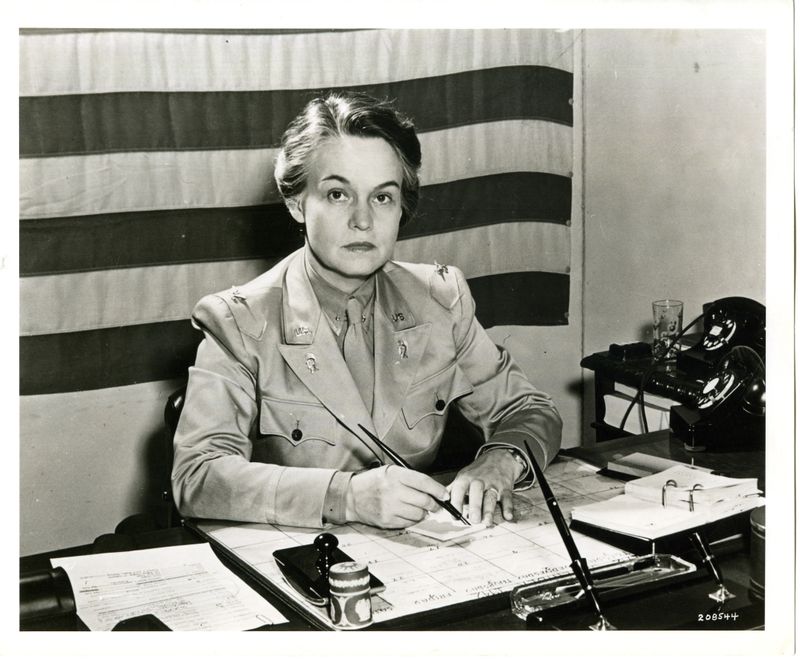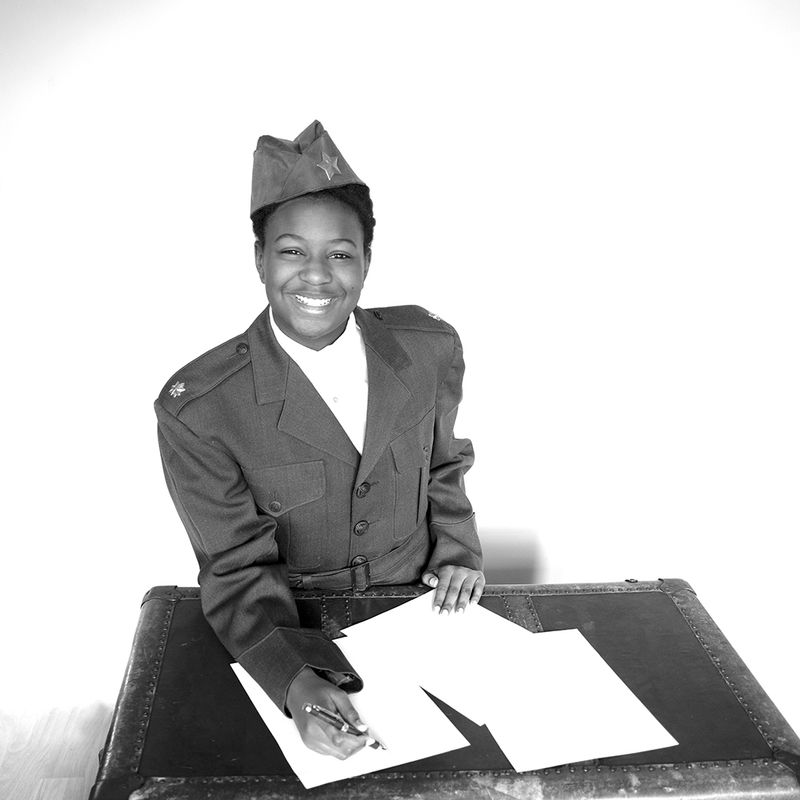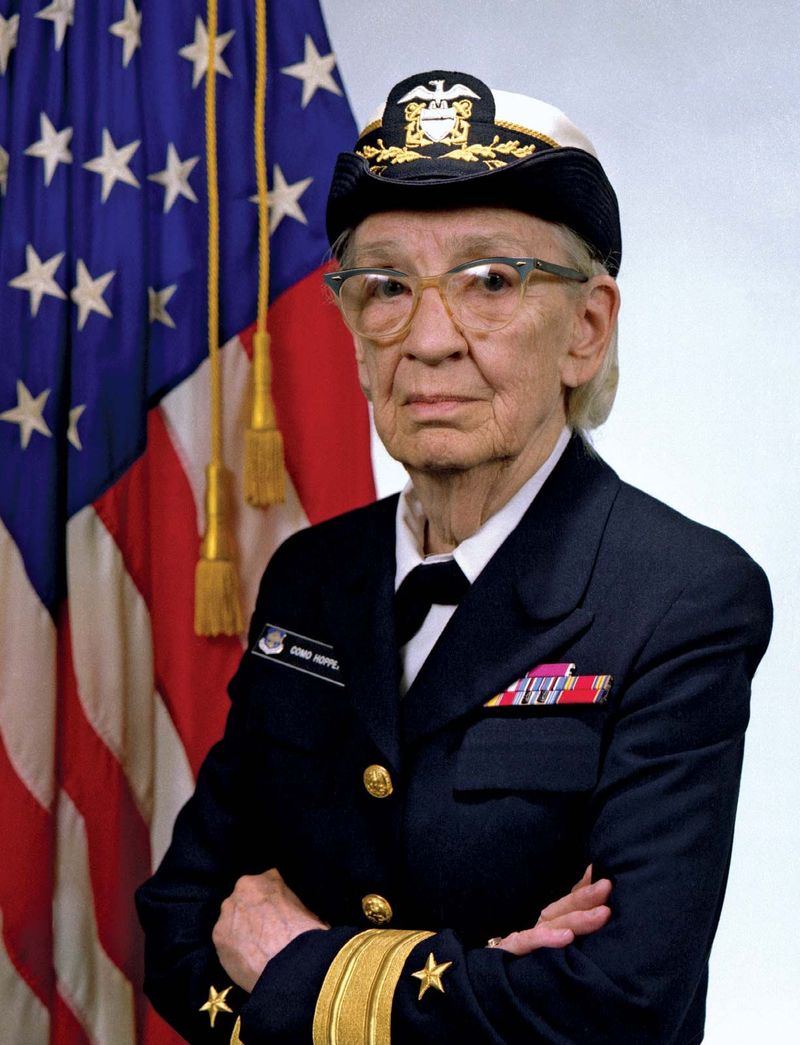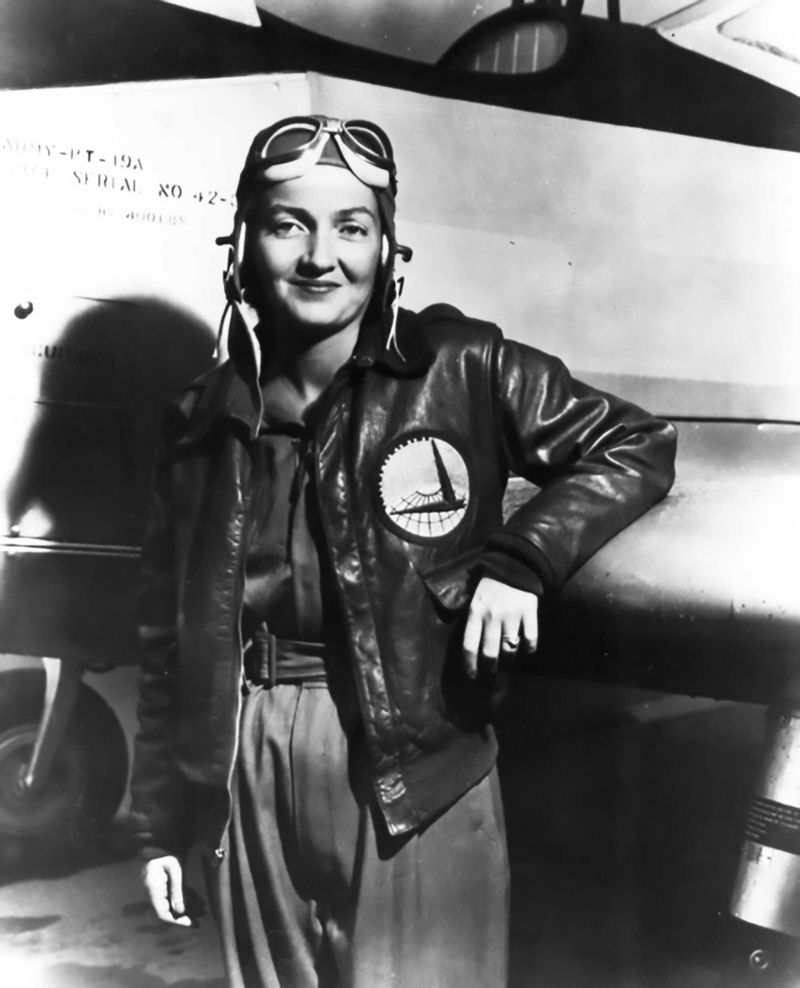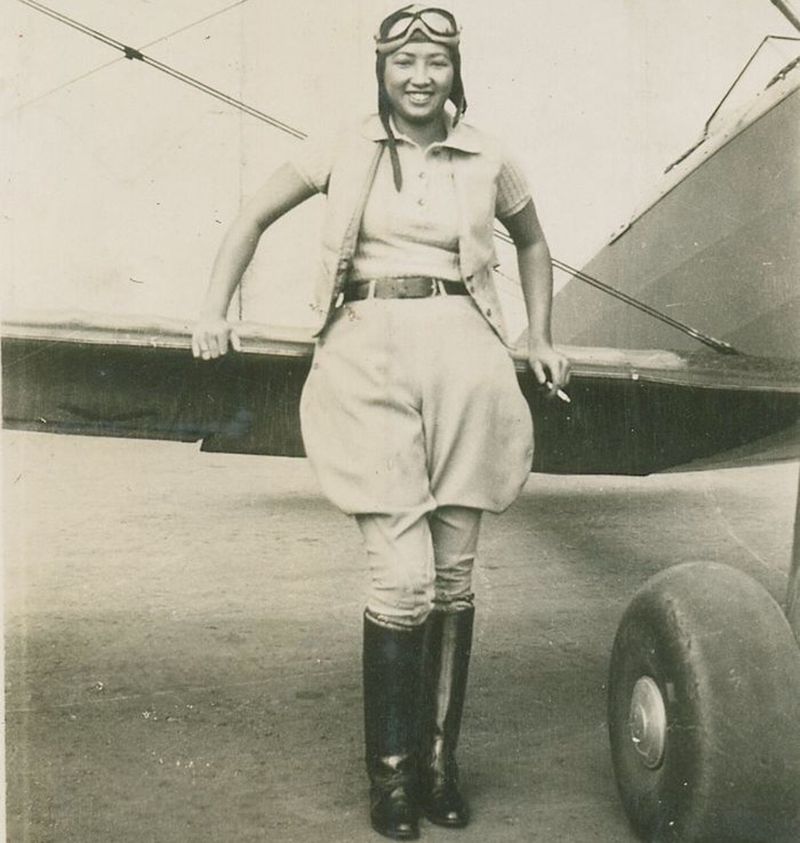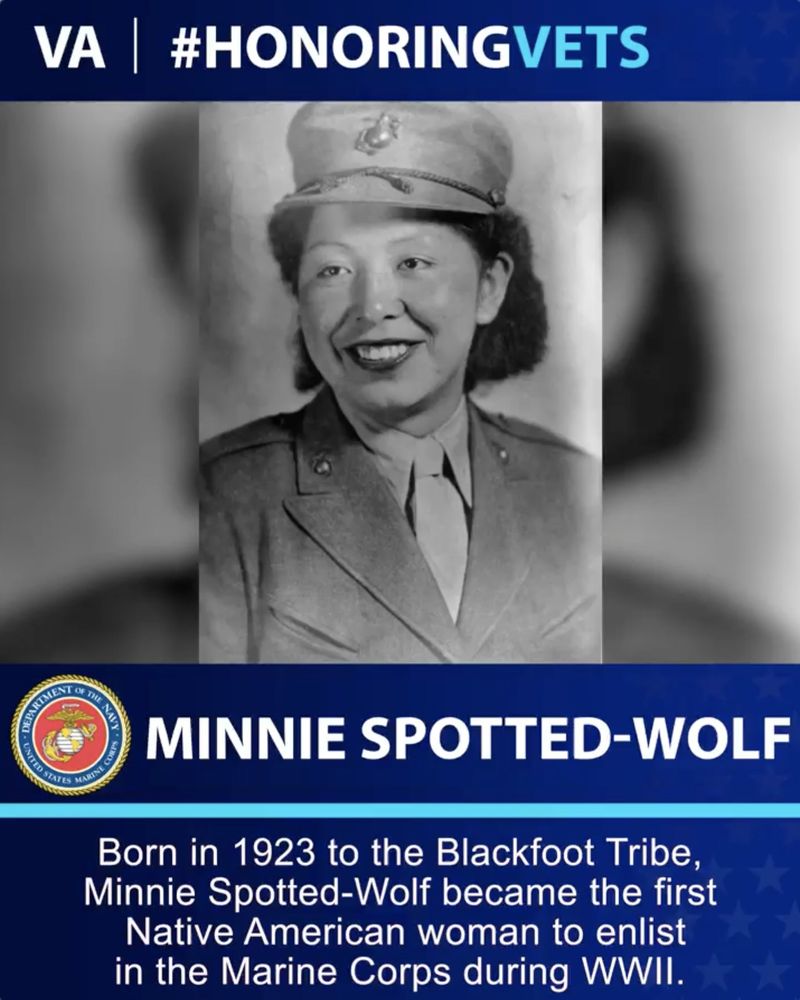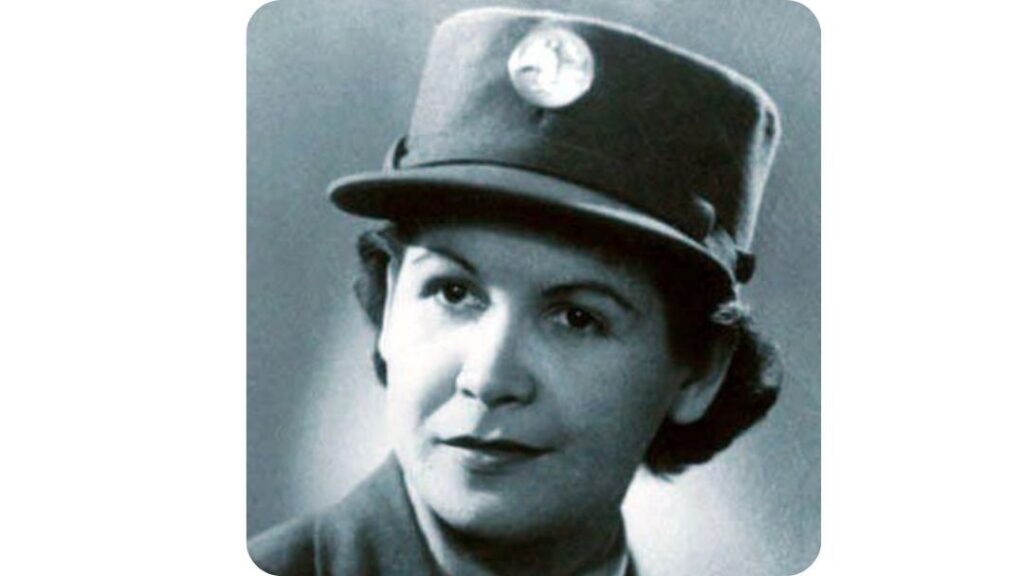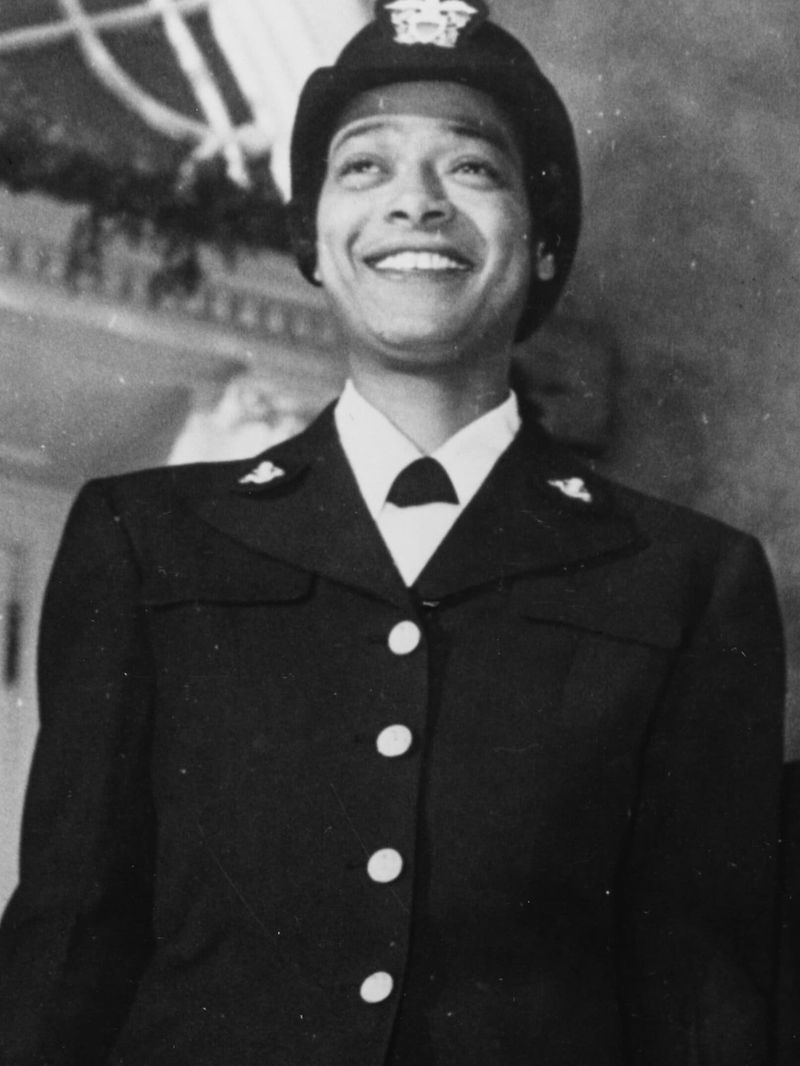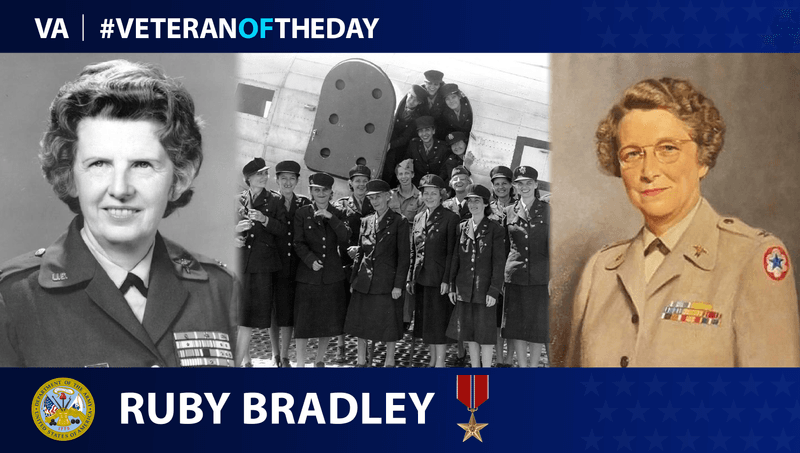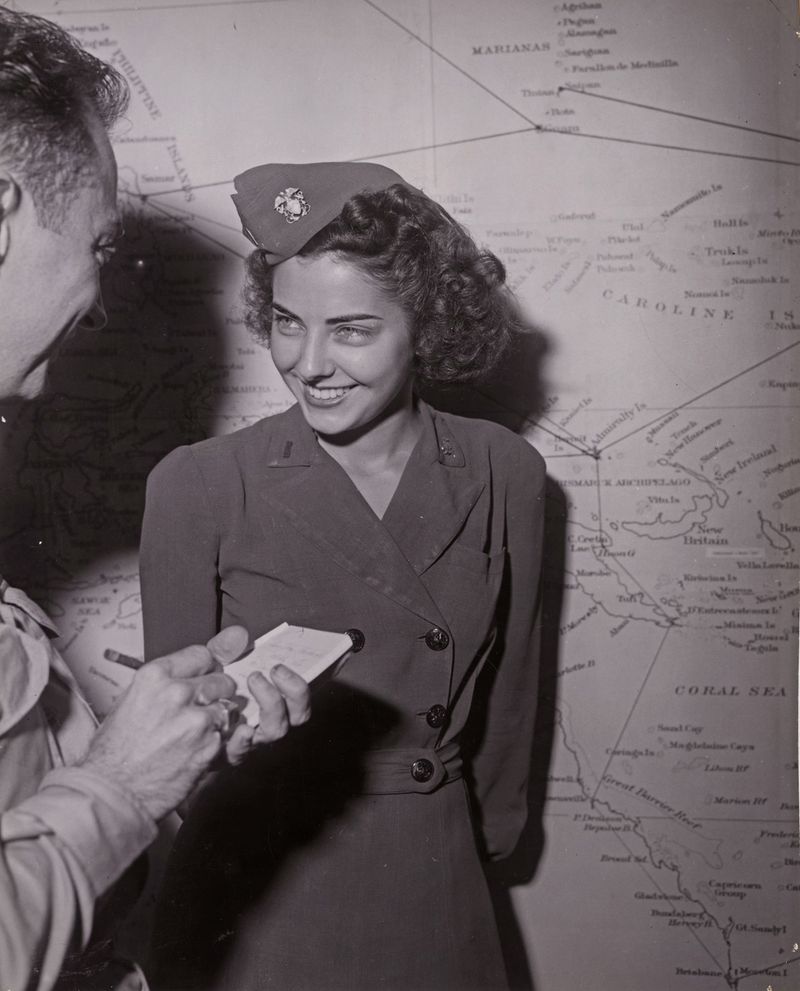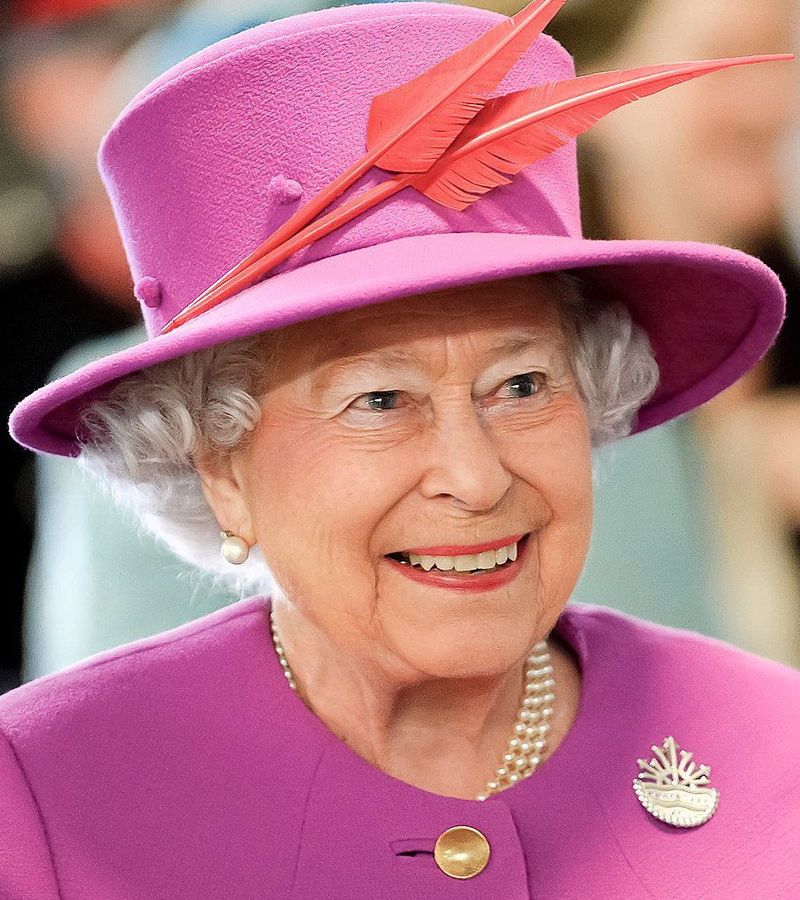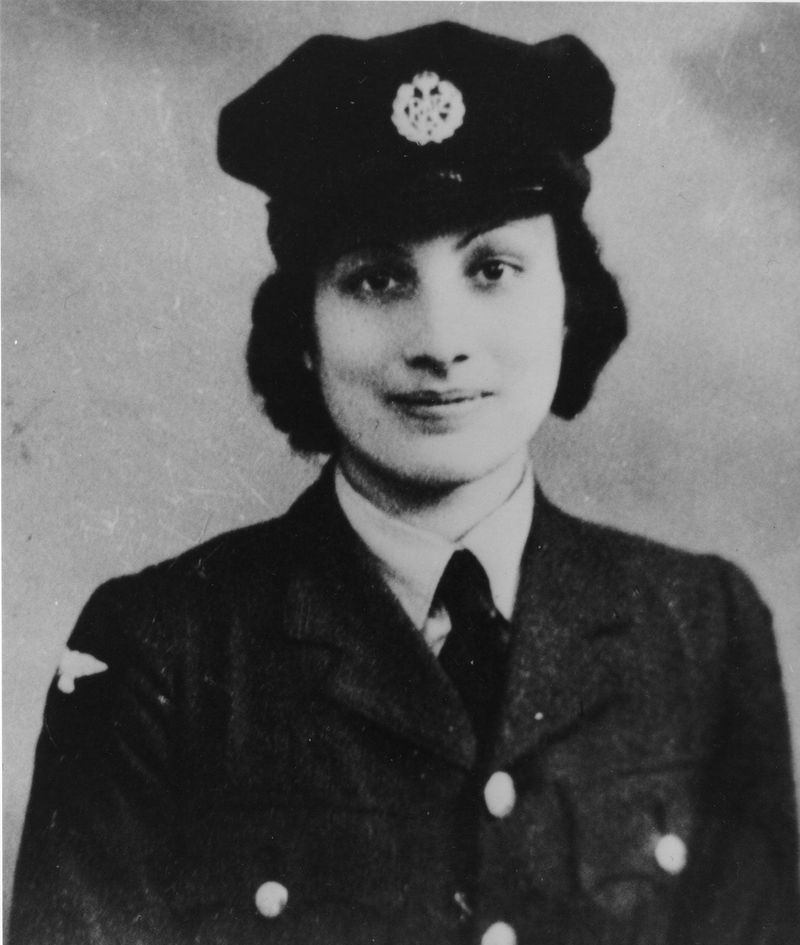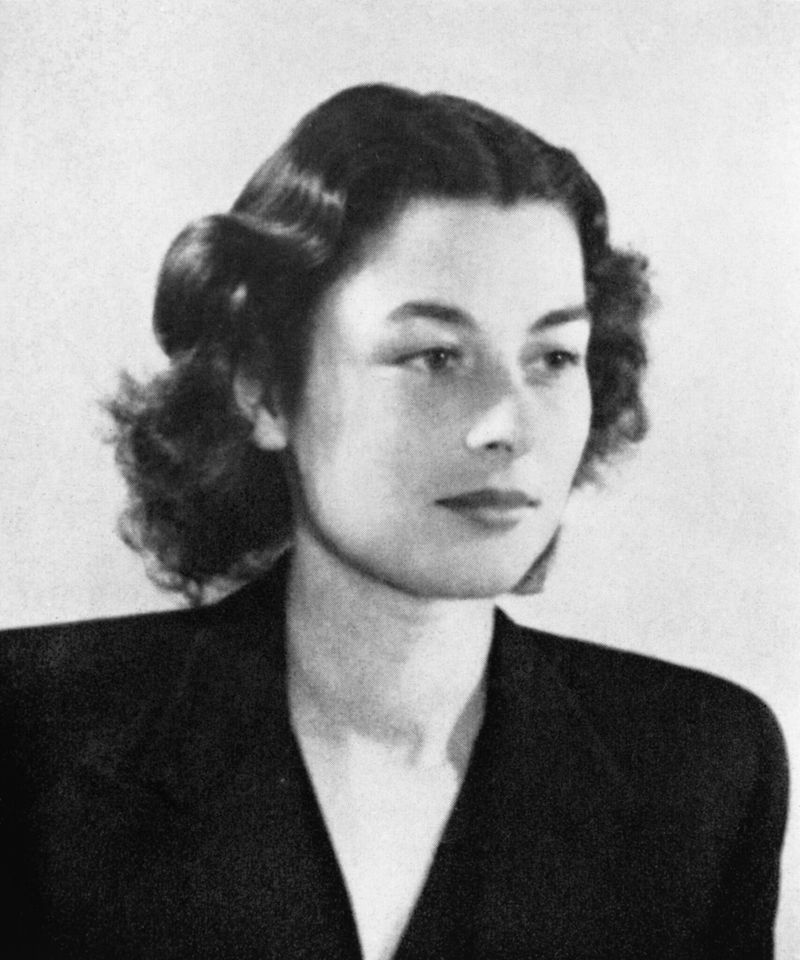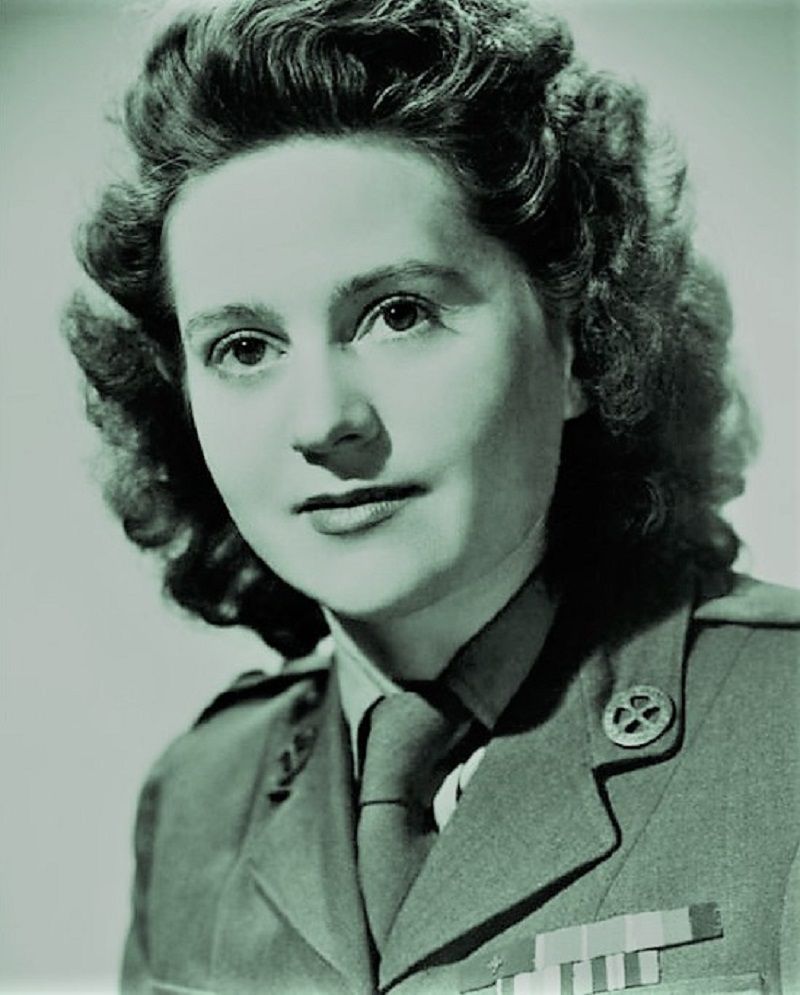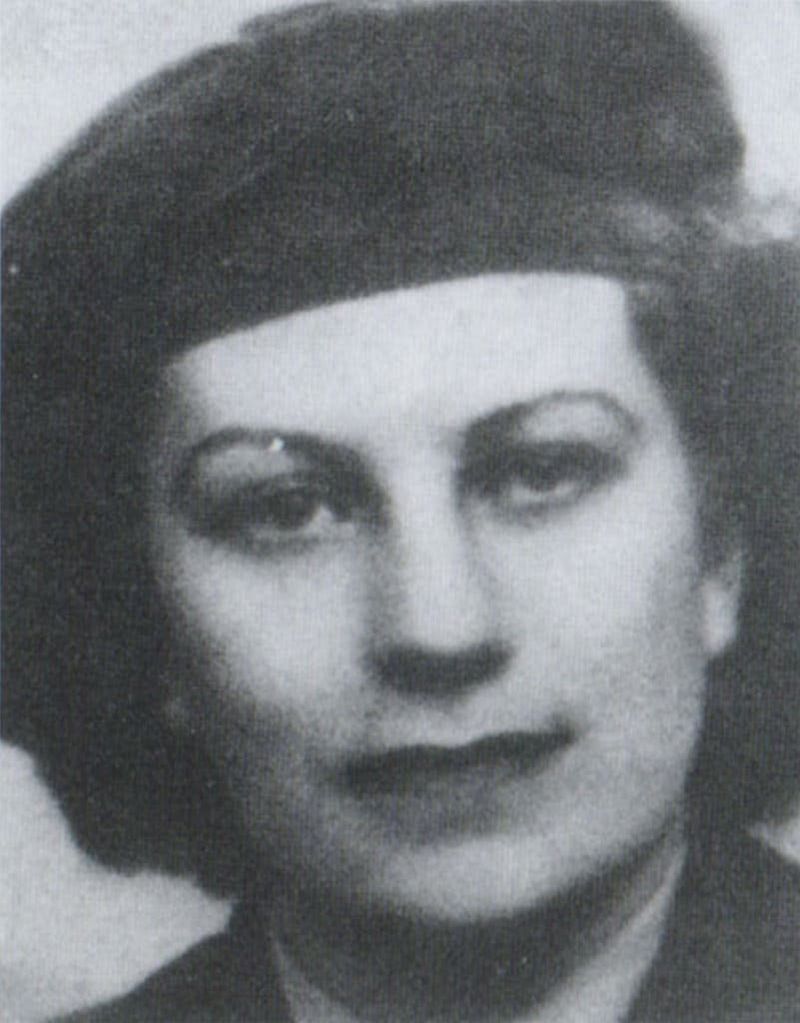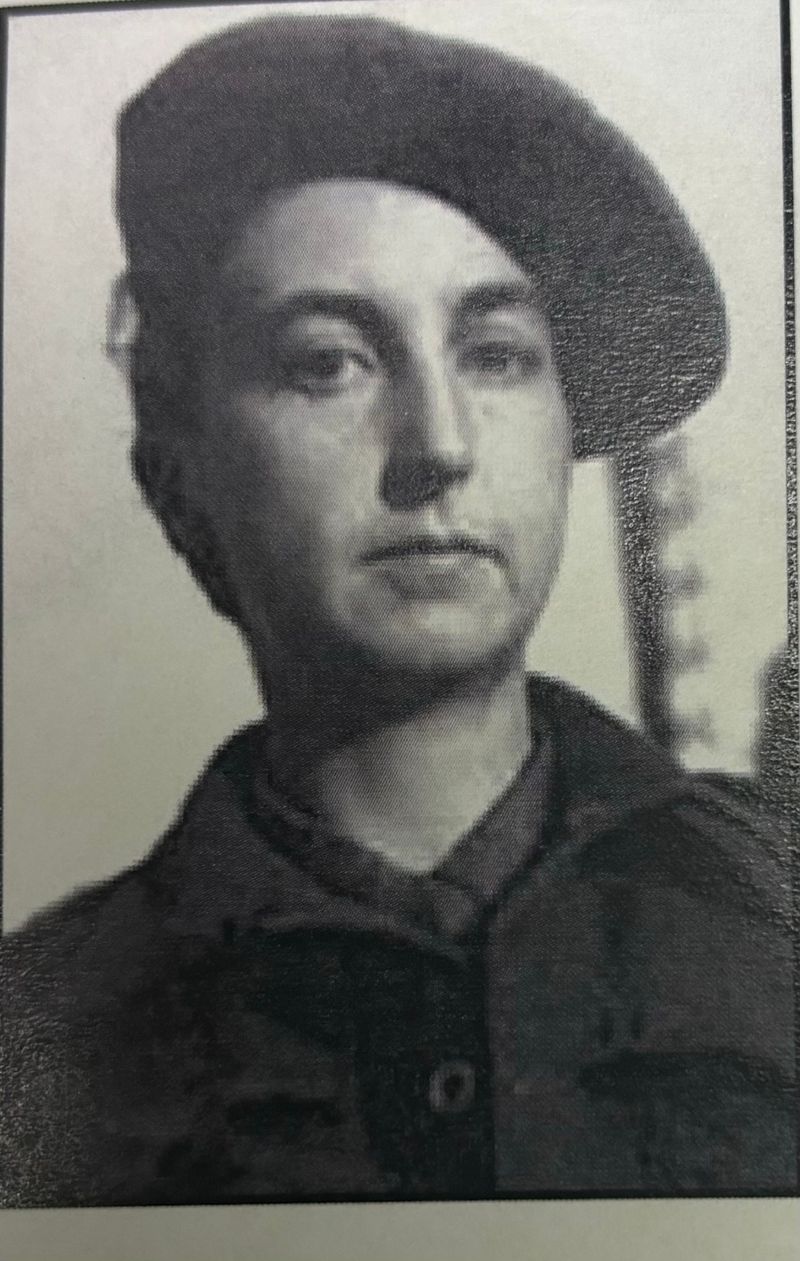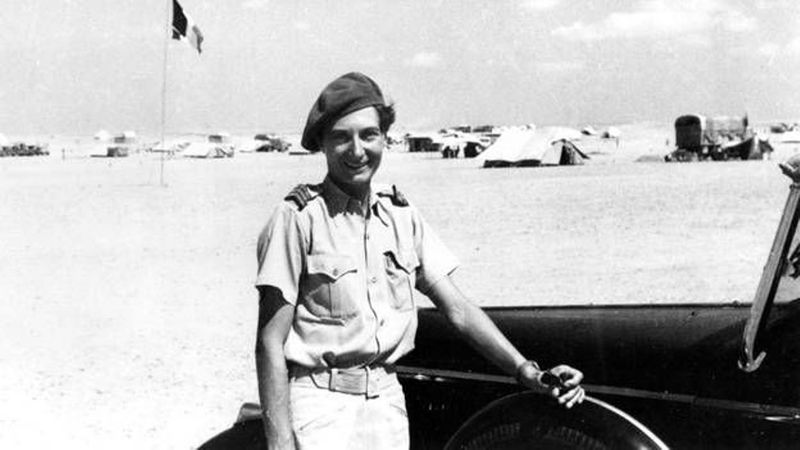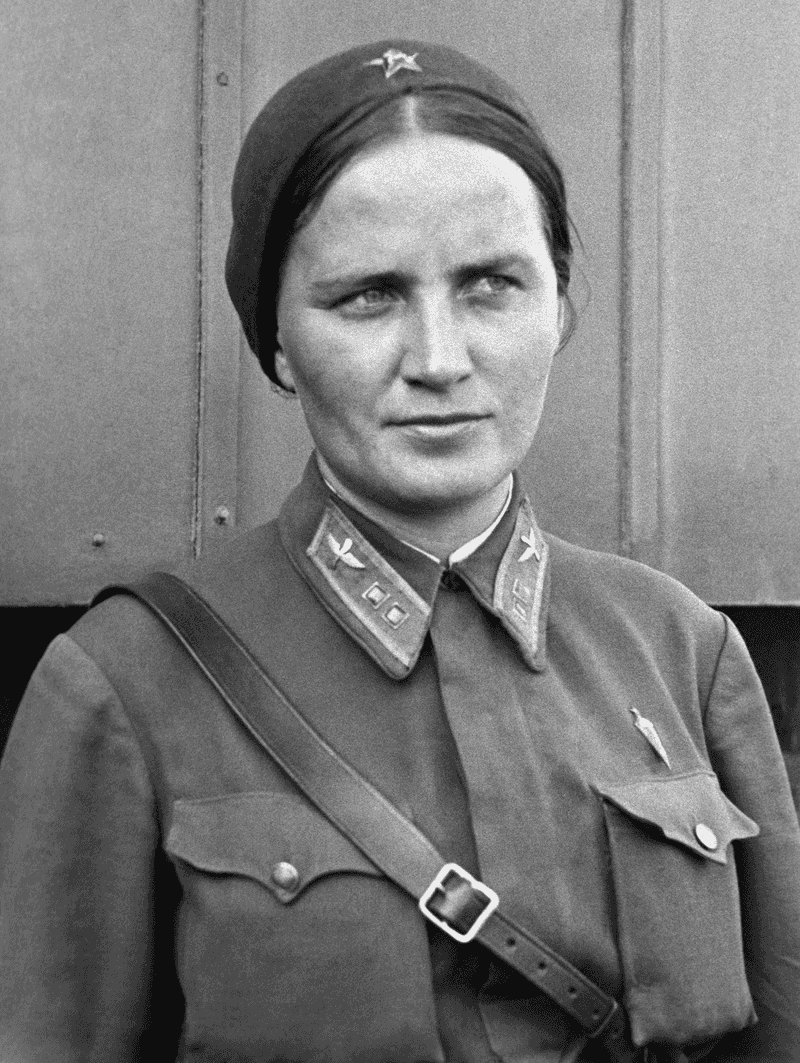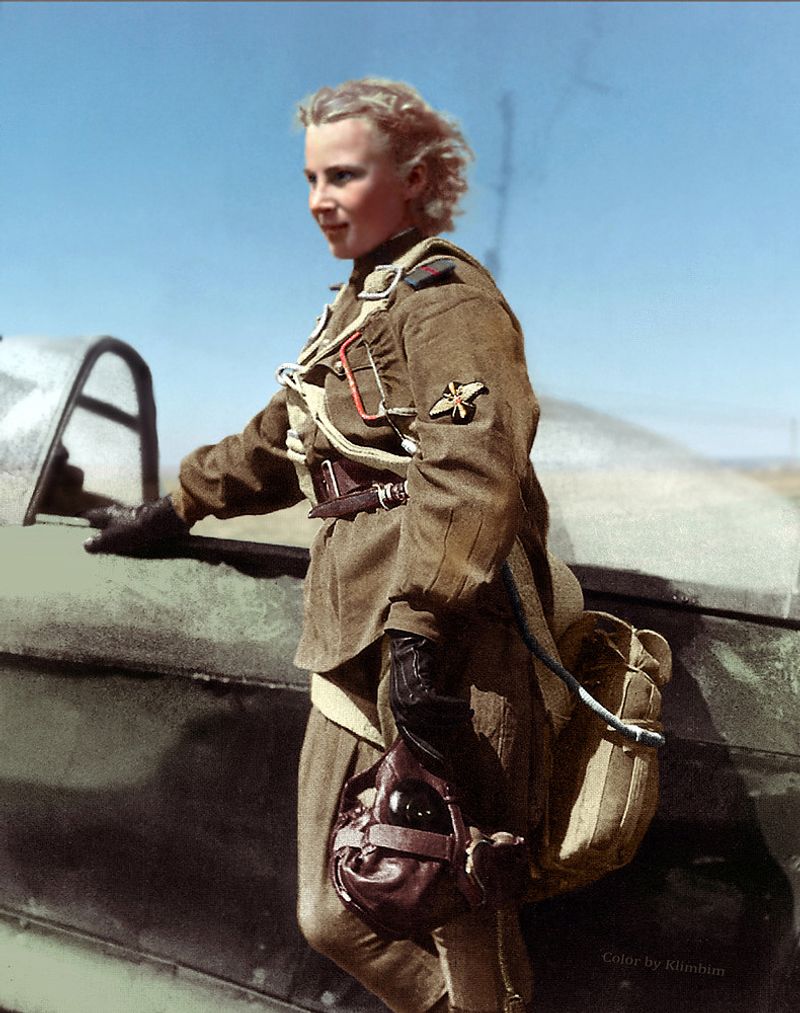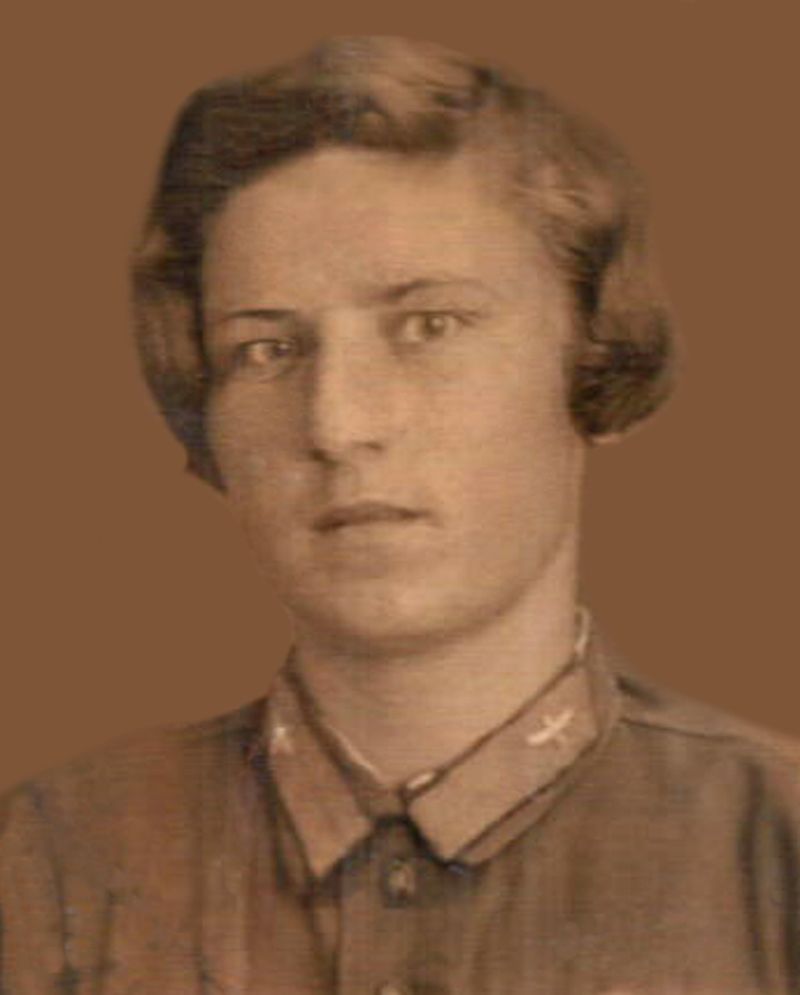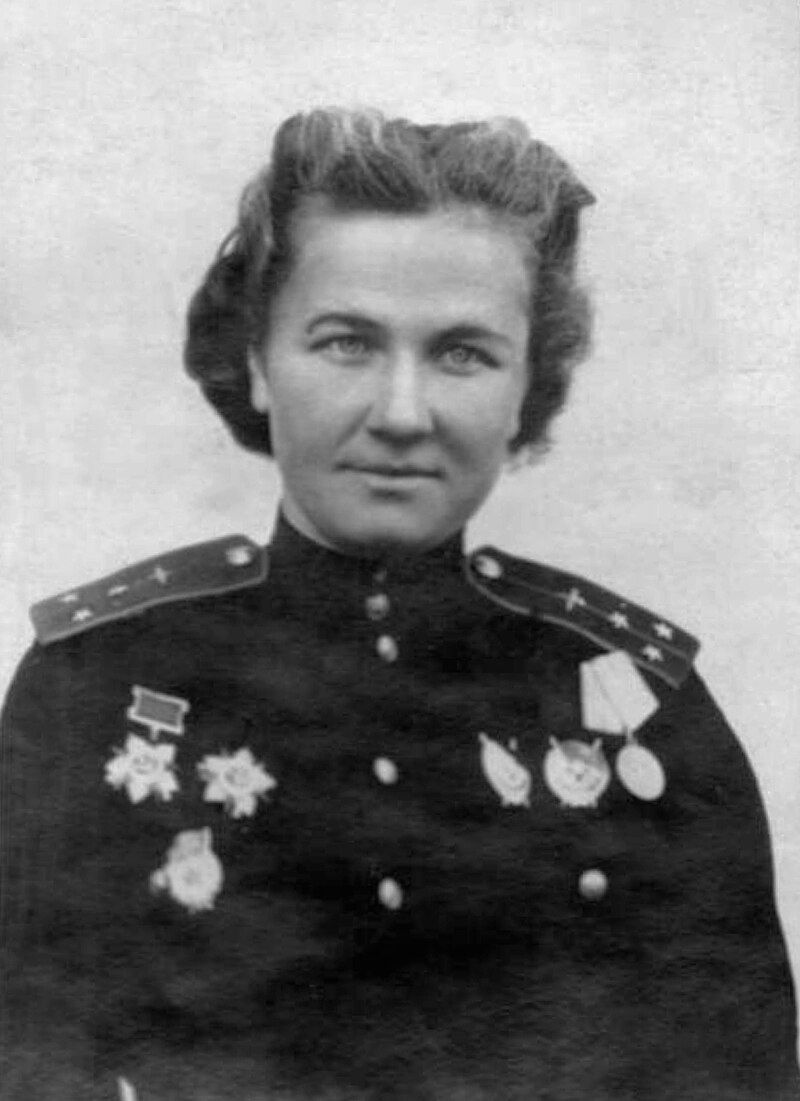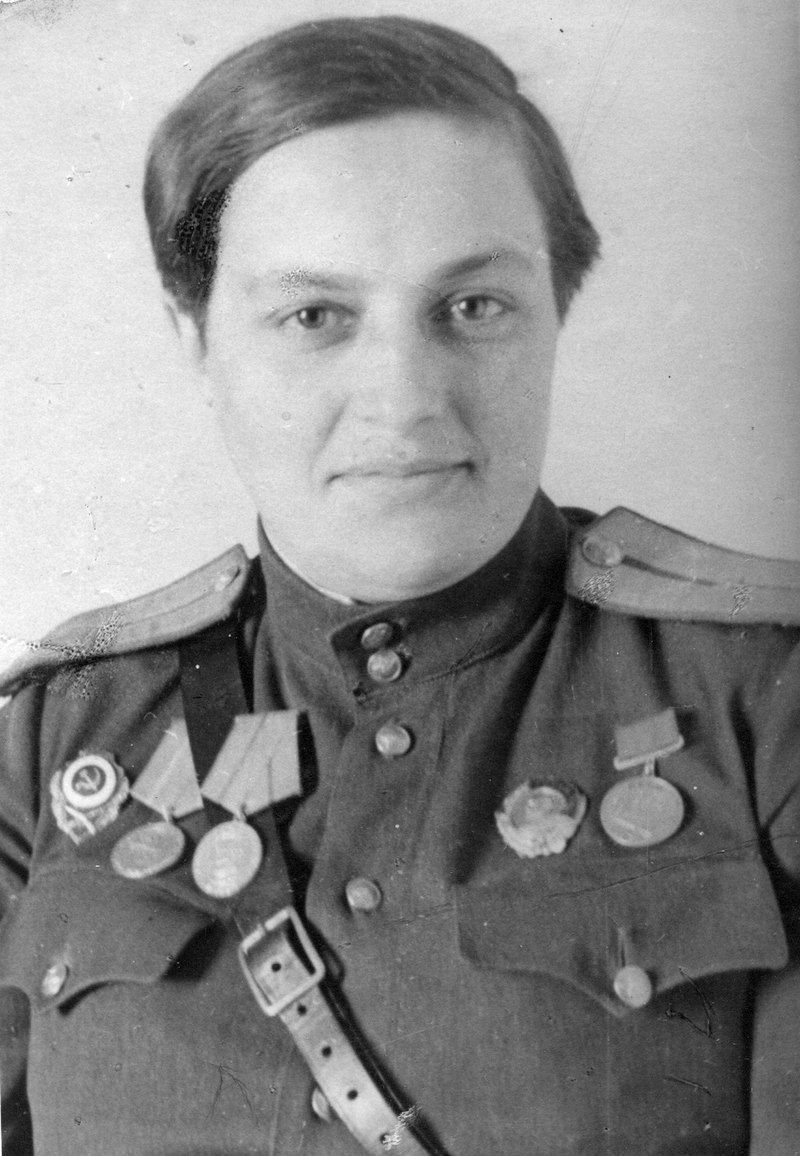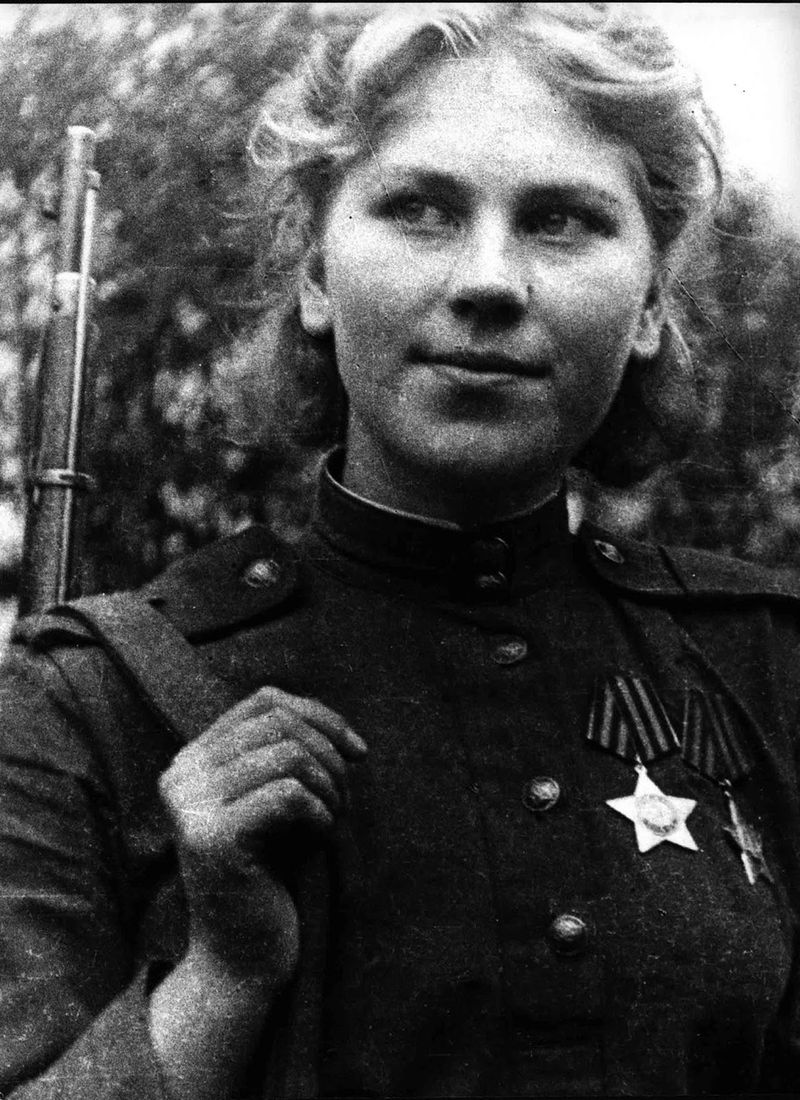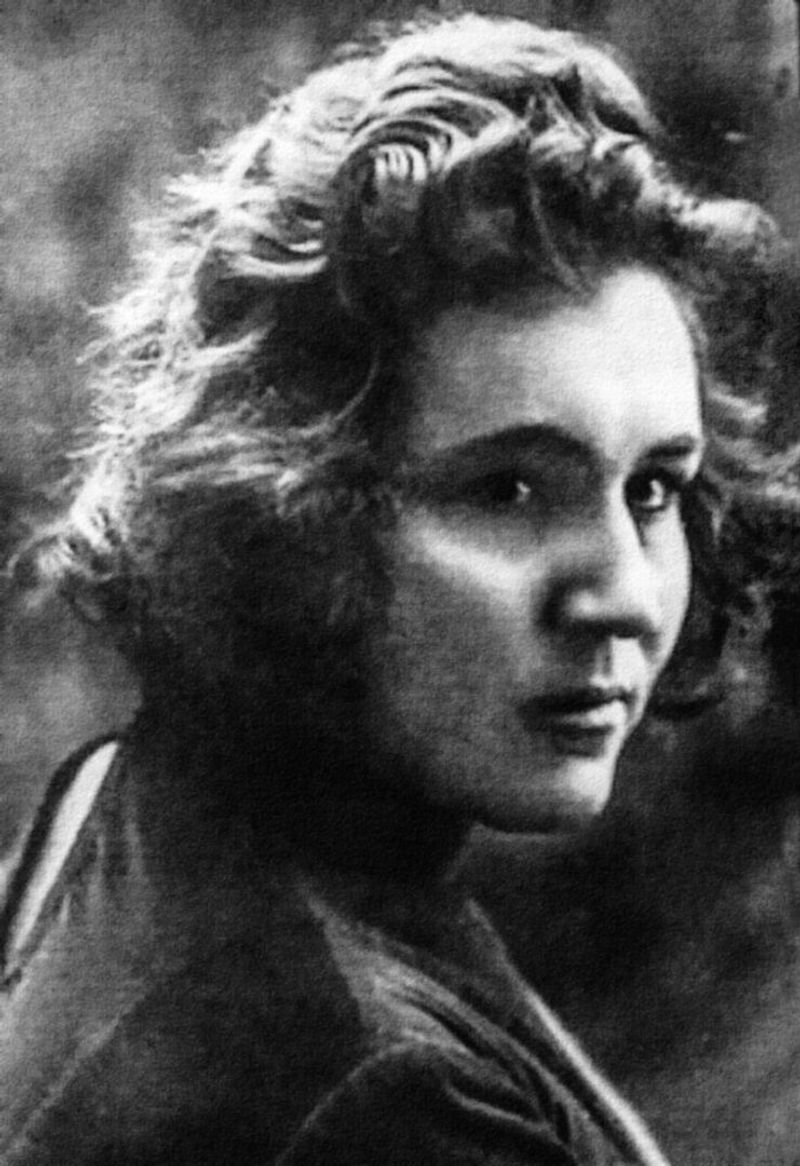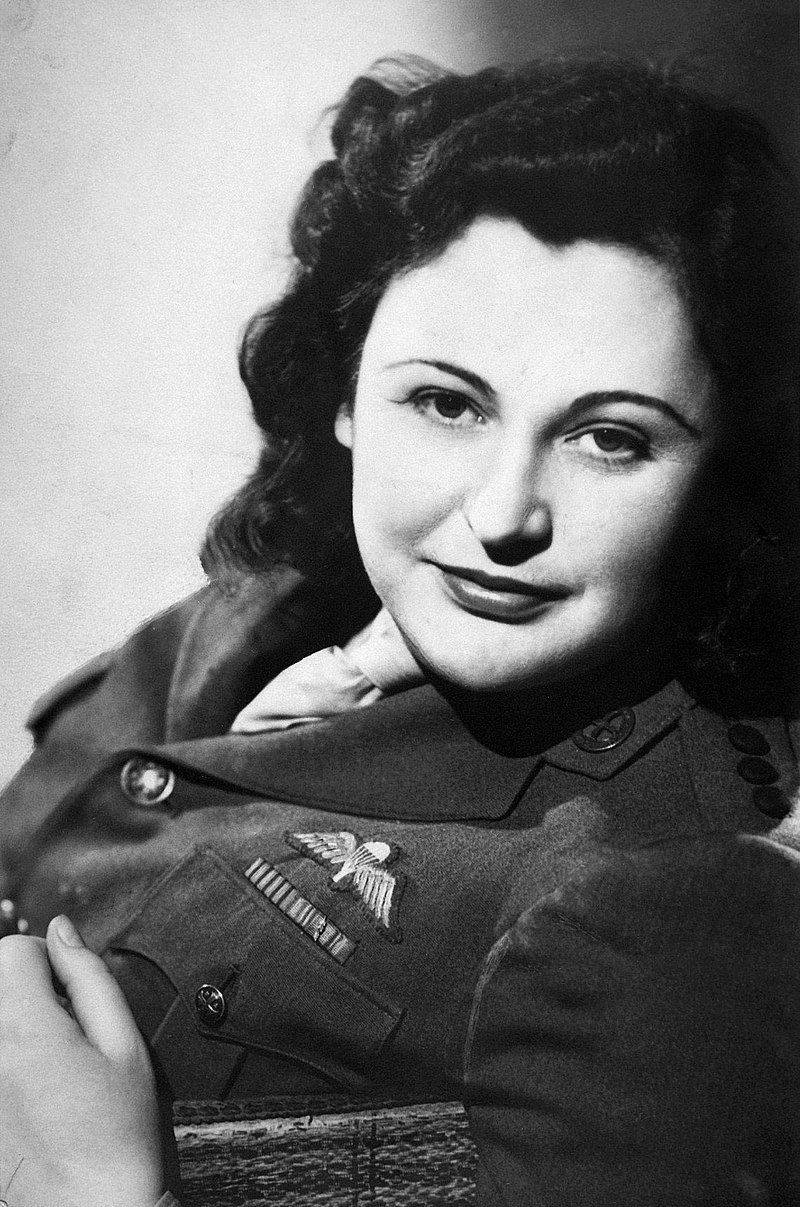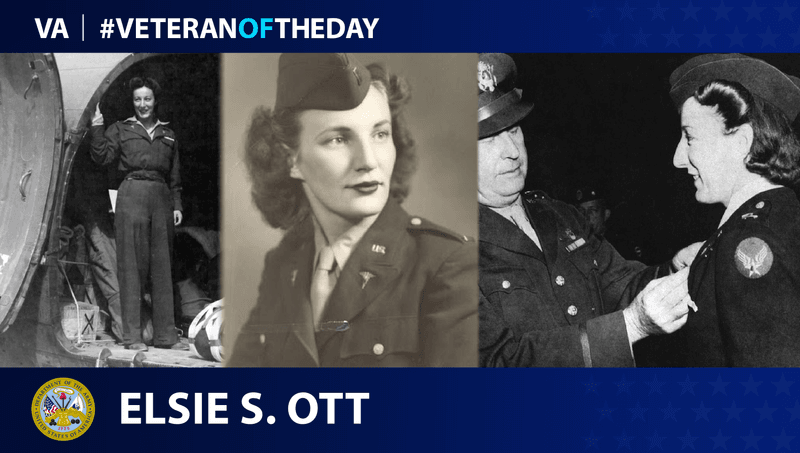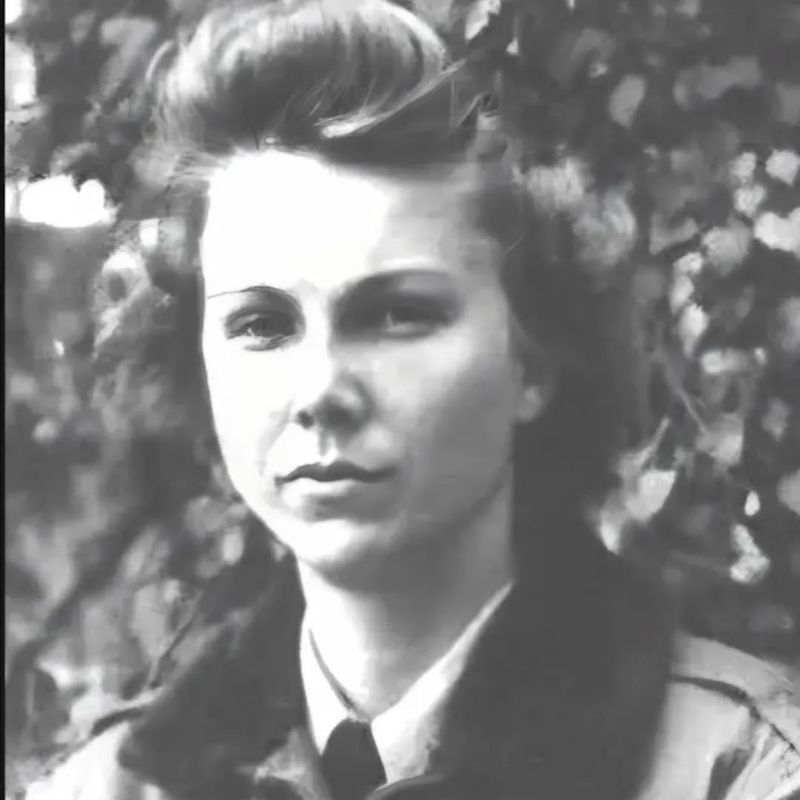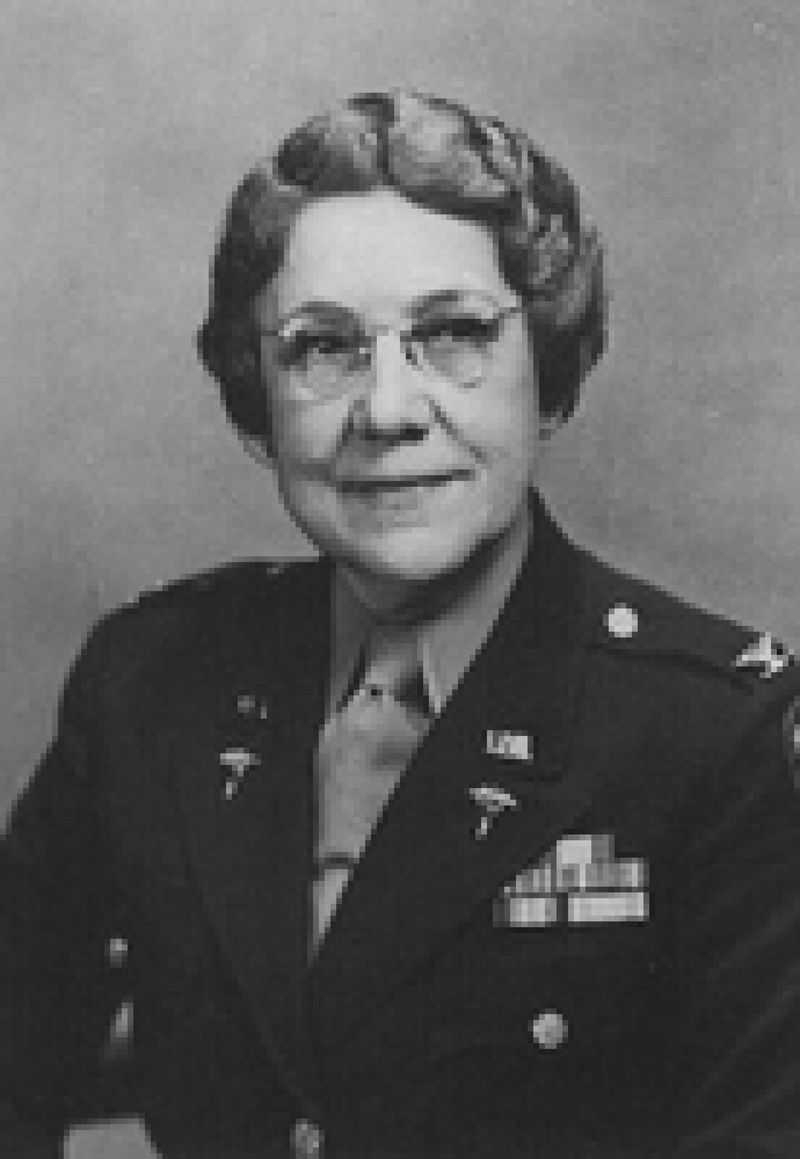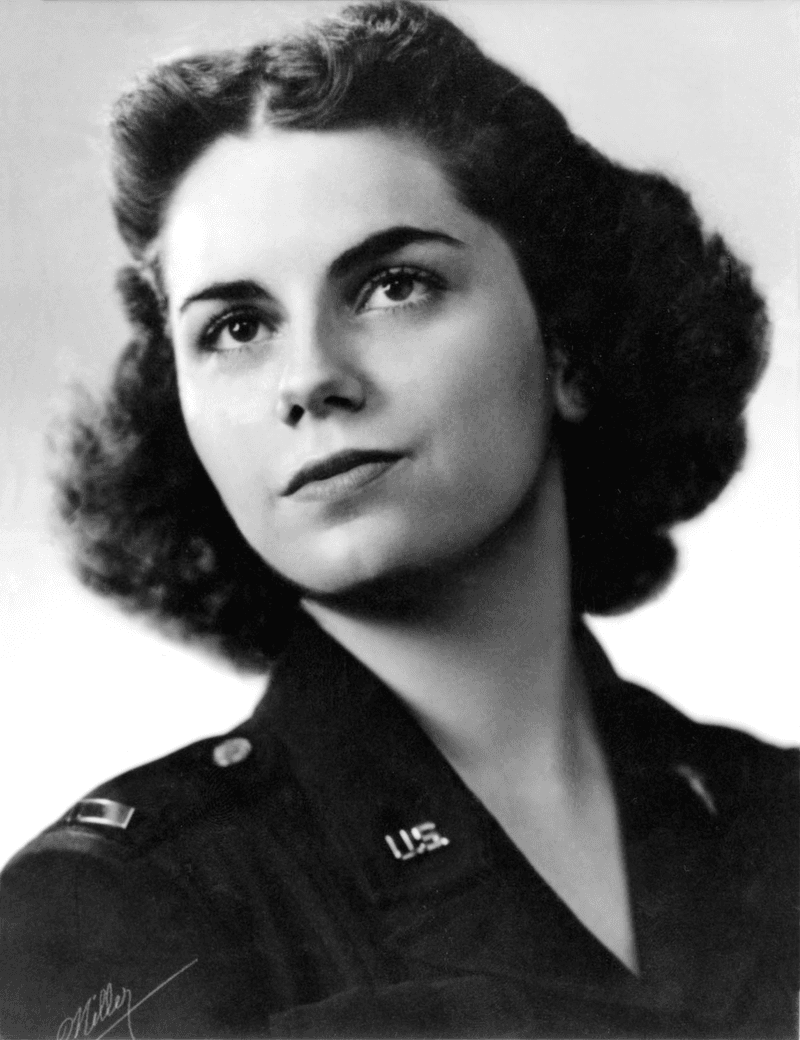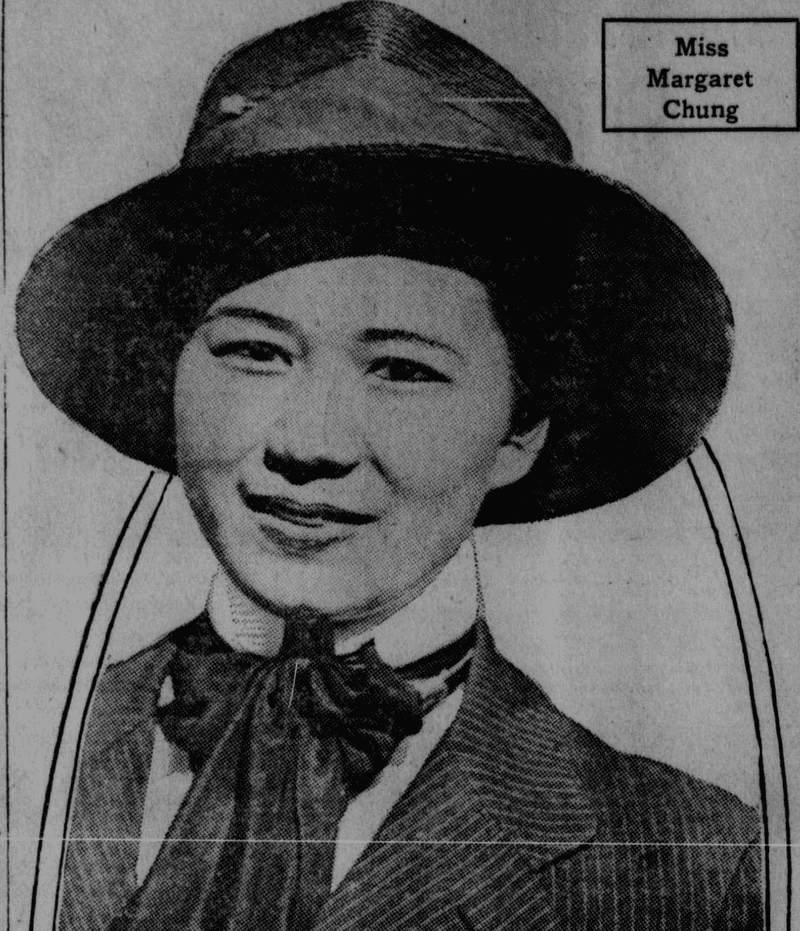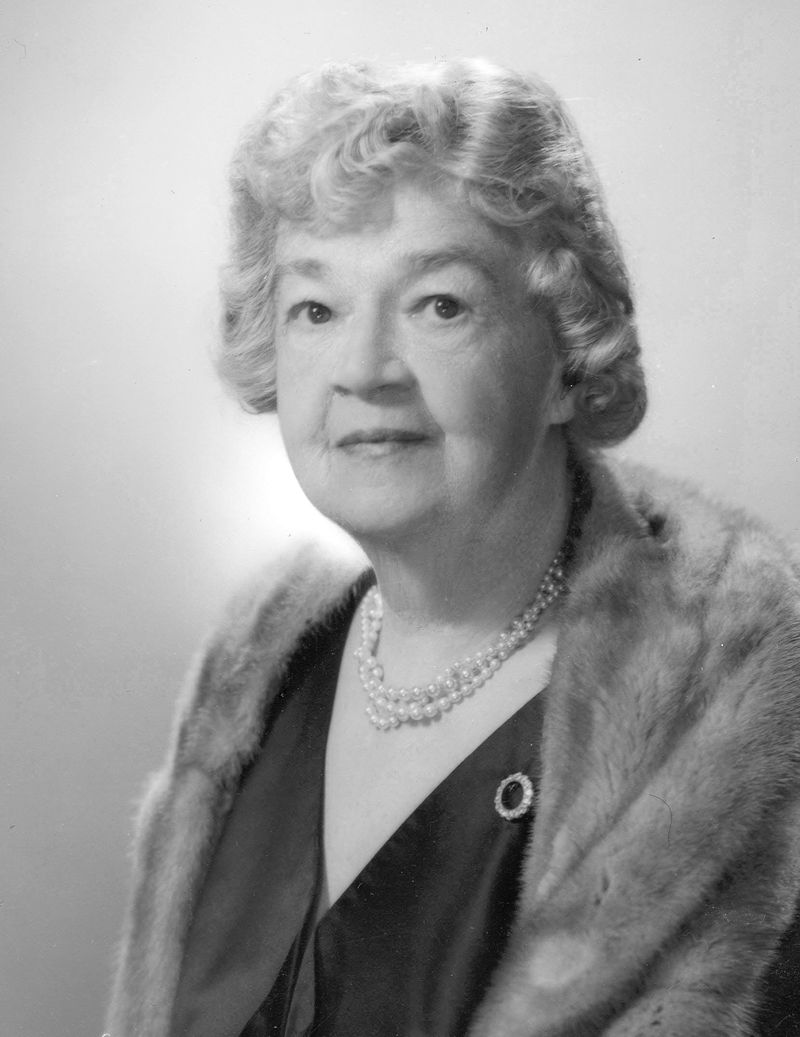Explore the remarkable stories of 33 women who played significant roles during World War II, breaking barriers and contributing to the war effort in various capacities across the globe.
Their courage, dedication, and groundbreaking achievements not only paved the way for future generations but also reshaped the perception of women’s capabilities in times of conflict.
1. Oveta Culp Hobby (1905–1995)
Oveta Culp Hobby served as the first director of the Women’s Army Auxiliary Corps, later becoming the Women’s Army Corps. Her leadership was pivotal in formalizing women’s roles in the U.S. Army.
Hobby managed the growth of the Corps, expertly overseeing the integration of women into military service during a critical time. Her efforts were groundbreaking, allowing women to serve their country in uniform.
She faced numerous challenges but remained steadfast in her mission. Hobby’s work laid the foundation for future advancements in military gender equality and inspired countless women to pursue military careers.
2. Major Charity Adams Earley (1918–2002)
Major Charity Adams Earley was the highest-ranking African American woman in the Women’s Army Corps during WWII. She commanded the 6888th Central Postal Directory Battalion, the only all-female, all-Black battalion deployed overseas.
Her leadership was instrumental in organizing and expediting the mail service across Europe, thereby boosting morale among troops. Facing both racial and gender discrimination, Earley led with resilience and determination.
Her achievements not only highlighted the capabilities of African American women in the military but also paved the way for greater inclusion and diversity in armed forces leadership.
3. Grace Hopper (1906–1992)
Grace Hopper, a pioneering computer scientist, served in the U.S. Navy Reserve as part of the WAVES. During WWII, she worked on the Harvard Mark I computer, a groundbreaking project that laid the foundations for modern computing.
Her innovative thinking and programming skills were vital to the development of early computer technology. Hopper’s contributions extended beyond the war, as she later played a key role in developing computer programming languages.
Her legacy as a trailblazer in technology continues to inspire women in STEM fields, highlighting the impact of her wartime service on the future of computing.
4. Nancy Harkness Love (1914–1976)
Nancy Harkness Love founded the Women’s Auxiliary Ferrying Squadron (WAFS) during WWII, a precursor to the Women Airforce Service Pilots. As a skilled pilot, she played a crucial role in organizing female pilots to ferry aircraft from factories to airfields.
Love’s leadership was vital in proving women’s capabilities in aviation, a field dominated by men at the time. Her work ensured the efficient delivery of aircraft, which was critical to the war effort.
Nancy’s dedication and passion helped pave the way for future generations of female pilots, breaking gender barriers in military aviation.
5. Jacqueline “Jackie” Cochran (1906–1980)
Jacqueline Cochran was one of the most prominent aviators in U.S. history, serving as the director of the Women Airforce Service Pilots during WWII. She was instrumental in training women pilots to support the Army Air Forces.
Her efforts proved that women could handle the rigors of military flying. Cochran’s leadership and vision were crucial in establishing the WASP program, which significantly contributed to the war effort by freeing male pilots for combat duty.
Her legacy as a pioneering aviator and advocate for women in aviation continues to inspire new generations of female pilots.
6. Hazel Ying Lee (1912–1944)
Hazel Ying Lee was the first Chinese American woman to fly for the U.S. military, serving as a pilot with the Women Airforce Service Pilots. She was part of the essential effort to ferry aircraft during WWII.
Lee’s dedication and skill were evident, and she was known for her fearless flying. Tragically, she died from injuries sustained in a runway collision, but her trailblazing career broke racial and gender barriers.
Hazel’s service highlighted the diverse contributions of women to the war effort and remains a testament to her courage and pioneering spirit in military aviation.
7. Minnie Spotted Wolf (1923–1988)
Minnie Spotted Wolf was the first known Native American woman to enlist in the U.S. Marine Corps Women’s Reserve. She served as a heavy equipment operator and driver, roles that were critical to the logistics and transportation efforts during WWII.
Spotted Wolf overcame cultural and gender barriers to serve her country with distinction. Her enlistment and service were significant, showcasing the diverse backgrounds of women who contributed to the war effort.
Minnie’s legacy is one of courage and determination, inspiring future generations of Native Americans and women who seek to serve in the military.
8. Carmen Contreras-Bozak (1919–2017)
Carmen Contreras-Bozak made history as the first Hispanic woman to serve in the Women’s Army Corps. Stationed in North Africa, her primary role was in communications, a vital component of the military operations during WWII.
Her linguistic skills and dedication ensured effective coordination and support for the Allied forces. Facing challenges in a male-dominated field, Contreras-Bozak’s service exemplified the important contributions of Hispanic women in the military.
Her pioneering efforts paved the way for greater diversity and inclusion within the armed forces, inspiring future generations of Hispanic women to pursue military careers.
9. Harriet Ida Pickens (1909–1969) & Frances Wills (1915– )
Harriet Ida Pickens and Frances Wills were the first African American female officers commissioned in the U.S. Navy WAVES. Their commissioning broke significant racial barriers and marked a pivotal point in naval history.
Both women faced considerable challenges, yet their determination and leadership set a precedent for greater inclusion within the Navy.
Their service not only paved the way for future African American women in the military but also highlighted the need for diversity and representation.
Pickens and Wills remain inspirational figures for their courage and dedication to challenging racial and gender norms in the military.
10. Ruby Bradley (1907–2002)
Ruby Bradley was one of the most highly decorated women in U.S. military history, serving as a nurse in the U.S. Army Nurse Corps during WWII.
Captured by the Japanese, she served as a POW nurse in the Philippines, where she continued to care for fellow prisoners under dire conditions. Bradley’s bravery and dedication saved countless lives, earning her numerous commendations.
Her resilience in the face of adversity is a testament to her strength and commitment. Ruby’s legacy as a compassionate and courageous nurse continues to inspire healthcare professionals in the military and beyond.
11. Marcella LeBeau (1919–2021)
Marcella LeBeau, a member of the Cheyenne River Sioux Tribe, served in the U.S. Army Nurse Corps during WWII. Stationed in England and France, she provided critical care in field hospitals, treating wounded soldiers.
LeBeau’s service was marked by dedication and compassion, addressing the needs of those on the front lines. Her work highlighted the vital role of nurses in war, offering both medical care and emotional support.
Marcella’s contributions extended beyond the battlefield, as she continued to advocate for veterans and health care improvements, leaving a lasting impact on military and civilian nursing.
12. Jane Kendeigh (1922–1987)
Jane Kendeigh was the first U.S. Navy flight nurse to land on Iwo Jima and Okinawa, where she provided critical emergency care to wounded Marines.
Her role was essential in the rapid transport and treatment of injured soldiers, often under challenging conditions. Kendeigh’s bravery and skill saved numerous lives, highlighting the importance of flight nursing in military operations.
Her pioneering work in airborne medical evacuation set a standard for future military and civilian aeromedical services. Jane’s dedication to her patients and her groundbreaking service continues to inspire nurses and healthcare professionals worldwide.
13. Princess Elizabeth (1926–2022)
Princess Elizabeth served in the Auxiliary Territorial Service as a driver and mechanic during WWII. She was the first female member of the British Royal Family to serve in the armed forces, demonstrating a commitment to her country amidst a global conflict.
Her service included vehicle maintenance and driving, essential tasks that supported military logistics. Elizabeth’s contribution provided a unique example of leadership and duty, bridging the gap between royalty and common service.
Her wartime efforts were a precursor to her future role as Queen, underscoring her dedication to service and responsibility.
14. Noor Inayat Khan (1914–1944)
Noor Inayat Khan was a British Special Operations Executive agent, serving as a wireless operator in occupied France. Of Indian-American heritage, she was captured and executed by the Germans but showed remarkable courage and resilience under torture.
Her bravery was posthumously recognized with the George Cross. Khan’s intelligence work was crucial to the Resistance, and her ultimate sacrifice highlighted the dangerous and vital roles women played in espionage.
Noor’s legacy as a heroine of WWII continues to inspire, reminding us of the diverse contributions and sacrifices made by women during the war.
15. Violette Szabo (1921–1945)
Violette Szabo was a British Special Operations Executive agent who parachuted into France to coordinate Resistance efforts against the German occupation.
Captured and later executed, her bravery and dedication were posthumously honored with the George Cross. Szabo’s actions were critical in supporting the French Resistance and disrupting enemy operations.
Her legacy is one of courage and sacrifice, exemplifying the vital roles women held in undercover operations.
Violette’s story continues to resonate, inspiring future generations with her commitment to freedom and justice, despite the personal risks she faced in occupied territory.
16. Odette Sansom (1912–1995)
Odette Sansom served as an SOE agent, working undercover in France during WWII. She endured capture, torture, and imprisonment by the Gestapo, but never betrayed her comrades.
Her bravery was recognized with the George Cross, highlighting her extraordinary courage and resilience. Sansom’s intelligence work played a crucial role in supporting the Resistance and undermining German operations.
Her story is one of immense personal sacrifice for the greater good. Odette’s legacy as a WWII heroine continues to inspire, demonstrating the profound impact of women’s contributions to the war effort and their unwavering spirit.
17. Eileen Nearne (1921–2010)
Eileen Nearne served as a wireless operator for the British SOE, operating under the code name “Rose” in occupied France. Captured and tortured by the Gestapo, she survived the war, demonstrating remarkable resilience and courage.
Nearne’s intelligence work was vital to the Resistance, facilitating communications and coordinating operations.
Her legacy is one of quiet strength and dedication, representing the crucial yet often unrecognized roles women played in espionage during WWII.
Eileen’s story continues to inspire, highlighting the bravery and tenacity required in the face of extreme danger and adversity.
18. Pearl Witherington (1914–2008)
Pearl Witherington was a British SOE agent who organized a significant Resistance group in occupied France during WWII. Leading a 1,500-strong guerrilla force, she played a key role in disrupting German operations.
Witherington’s leadership and strategic skills were instrumental in the success of numerous missions. Her bravery was recognized with several commendations, highlighting her impact on the war effort.
Pearl’s story is one of exceptional leadership and courage, demonstrating the powerful contributions women made to the Resistance. Her legacy continues to inspire, showcasing the vital roles women held in covert operations.
19. Susan Travers (1909–2003)
Susan Travers served with the Free French forces as an ambulance driver and became the only woman officially to join the French Foreign Legion.
During the Siege of Bir Hakeim in North Africa, she drove her commanding officer’s vehicle under enemy fire, showcasing her bravery and skill.
Travers’ service was marked by her groundbreaking role in a male-dominated field, challenging traditional gender roles. Her courage and determination made her a notable figure in military history.
Susan’s legacy continues to inspire, highlighting the diverse contributions and pioneering spirit of women in wartime roles.
20. Marina Raskova (1912–1943)
Marina Raskova was a pioneering aviator in the Soviet Air Force, instrumental in forming three all-female air regiments, including the famed “Night Witches.”
Her leadership and vision empowered women to serve as pilots and navigators, challenging traditional gender roles. Raskova’s work was critical in showcasing women’s capabilities in combat aviation.
Sadly, she died in a flying accident during the war, but her legacy as a trailblazer in military aviation endures. Marina’s efforts remain an inspiration, demonstrating the impact of women in military roles and their contributions to the Soviet war effort.
21. Lydia “Lilya” Litvyak (1921–1943)
Lydia “Lilya” Litvyak was a Soviet fighter pilot credited with at least 12 solo victories, making her one of the top female fighter aces in history. Flying the Yak-1, her skill and bravery were critical in defending the Soviet Union during WWII.
Litvyak’s achievements were remarkable, as she excelled in a field dominated by men. Her legacy as a pioneering female pilot continues to inspire, demonstrating the capabilities and courage of women in combat roles.
Lilya’s story is one of exceptional talent and determination, highlighting the contributions of women to the Soviet war effort.
22. Yekaterina Budanova (1916–1943)
Yekaterina Budanova was a Soviet fighter pilot recognized as an ace, with around 11 victories during WWII. Flying the Yak-1, her combat skills and bravery contributed significantly to the Soviet defense efforts.
Budanova’s achievements were notable in a male-dominated field, showcasing the capabilities of women in military aviation. Her legacy is one of courage and excellence, inspiring future generations of female pilots.
Yekaterina’s story highlights the vital roles women played in the Soviet Air Force, breaking barriers and proving their mettle in combat situations during the war.
23. Nadezhda Popova (1921–2013)
Nadezhda Popova was a pilot in the “Night Witches,” a Soviet all-female bombing regiment known for their daring missions. She completed 852 combat flights during WWII, often braving enemy fire in rudimentary biplanes.
Popova’s courage and dedication were instrumental in the regiment’s success, earning her numerous awards. Her legacy is one of perseverance and skill, demonstrating the significant impact of women in military aviation.
Nadezhda’s story is a testament to the bravery and tenacity of the “Night Witches,” inspiring future generations of women to pursue aviation and military careers.
24. Lyudmila Pavlichenko (1916–1974)
Lyudmila Pavlichenko was a Soviet sniper credited with 309 confirmed kills, making her one of the deadliest snipers in history. Her exceptional marksmanship and bravery were critical in numerous battles on the Eastern Front during WWII.
Pavlichenko’s service was recognized with numerous honors, and she toured the U.S. and Canada to advocate for the Soviet war effort. Her legacy as a pioneering female sniper continues to inspire, showcasing the capabilities of women in combat roles.
Lyudmila’s story highlights the important contributions women made to the Soviet military, proving their effectiveness in warfare.
25. Roza Shanina (1924–1945)
Roza Shanina was a Soviet sniper noted for her marksmanship, with over 50 confirmed kills during WWII. Her skills and bravery on the Eastern Front were critical to the Soviet war effort.
Shanina’s contributions were significant, exemplifying the important role of women in combat. Despite the challenges, her determination and courage were evident, making her a celebrated figure in military history.
Roza’s legacy continues to inspire, highlighting the capabilities and dedication of women in warfare. Her story is a testament to the impact and contributions of female snipers in the Soviet military.
26. Mariya Oktyabrskaya (1905–1944)
Mariya Oktyabrskaya was a Soviet tank driver who sold her possessions to donate a tank, the “Fighting Girlfriend,” to the military. She personally operated it in combat, showcasing her dedication and patriotism.
Oktyabrskaya’s bravery and determination were evident, as she actively participated in numerous battles. Her contributions were critical to the Soviet war effort, breaking gender barriers in military roles.
legacy is one of courage and commitment, inspiring future generations to serve their country with passion and resolve. Her story highlights the diverse roles women played in the Soviet military during WWII.
27. Nancy Wake (1912–2011)
Nancy Wake, a New Zealand-born Allied secret agent, served with the British SOE and French Resistance. Known as the “White Mouse” for her elusiveness, she played a crucial role in coordinating Resistance efforts and conducting espionage missions.
Wake’s bravery and skill earned her multiple commendations, making her one of the Allies’ most decorated women. Her legacy is one of courage and tenacity, highlighting the vital contributions of women in covert operations during the war.
Nancy’s story continues to inspire, showcasing the diverse roles women played in the fight for freedom and justice.
28. Elsie Ott (1913–2006)
Elsie Ott was a pioneering U.S. Army Air Evacuation Nurse who played a crucial role in modernizing airborne patient evacuation during WWII.
Her service included organizing and implementing efficient transport of wounded soldiers, which significantly improved survival rates. Ott’s innovative approach and dedication were recognized with the first Air Medal awarded to a flight nurse.
Her contributions set a standard for future aeromedical evacuation services. Elsie’s legacy is one of compassion and innovation, inspiring future generations of nurses and healthcare professionals in military and civilian roles.
Her work highlighted the importance of medical care in combat scenarios.
29. Reba Whittle (1919–1981)
Reba Whittle was a U.S. Army flight nurse and the only American flight nurse held as a POW in the European Theater during WWII. Captured by the Germans after her plane was shot down, her resilience and determination were evident throughout her captivity.
Whittle’s experience highlighted the risks faced by military medical personnel and underscored the importance of their roles in war. Her story is one of courage and perseverance, inspiring future generations of nurses.
Reba’s legacy continues to impact military nursing, showcasing the challenges and contributions of flight nurses during wartime.
30. Florence Aby Blanchfield (1884–1971)
Florence Aby Blanchfield served as the Superintendent of the Army Nurse Corps, the first woman to receive a permanent U.S. Army commission.
Her leadership during WWII was crucial in expanding and organizing the nursing corps, ensuring effective medical care for soldiers. Blanchfield’s dedication to the nursing profession and her pioneering role set a precedent for future military healthcare leaders.
Her legacy is one of innovation and excellence, inspiring nurses and healthcare professionals. Florence’s work during the war highlighted the essential role of military nurses, contributing significantly to the health and morale of troops.
31. Mary Louise Hawkins
Mary Louise Hawkins served as a U.S. Army flight nurse, providing critical care while evacuating wounded soldiers under fire. Her service in the South Pacific was marked by bravery and dedication, ensuring the safe transport and treatment of injured personnel.
Hawkins’ efforts were vital in maintaining the health and morale of troops, showcasing the essential role of flight nurses in military operations.
Her legacy is one of courage and compassion, inspiring future generations of nurses and healthcare providers. Mary’s contributions highlight the impact of medical personnel in wartime, emphasizing their crucial support to combat forces.
32. Dr. Margaret Chung (1889–1959)
Dr. Margaret Chung, though not enlisted, served as a frontline physician and was affectionately known as the “unofficial mother” to thousands of U.S. servicemen. Her support extended beyond medical care, offering guidance and encouragement to soldiers.
Chung campaigned for the establishment of WAVES, advocating for women’s service in the military. Her pioneering efforts in medicine and advocacy set a foundation for future female physicians and military women.
Margaret’s legacy is one of compassion and leadership, highlighting the diverse ways women contributed to the war effort. Her story continues to inspire those in medical and military fields.
33. Edith Norse Rogers (1881–1960)
Edith Norse Rogers, a U.S. Congresswoman, played a crucial role in establishing the Women’s Army Auxiliary Corps by sponsoring groundbreaking legislation.
Although not in uniform, her efforts were pivotal in creating opportunities for women to serve in the military.
Rogers’ dedication to women’s rights and military service was instrumental in shaping policies that allowed women to contribute significantly during WWII. Her legacy is one of advocacy and change, inspiring future generations of women leaders.
Edith’s work highlights the importance of political support in advancing gender equality, particularly in military service and beyond.
